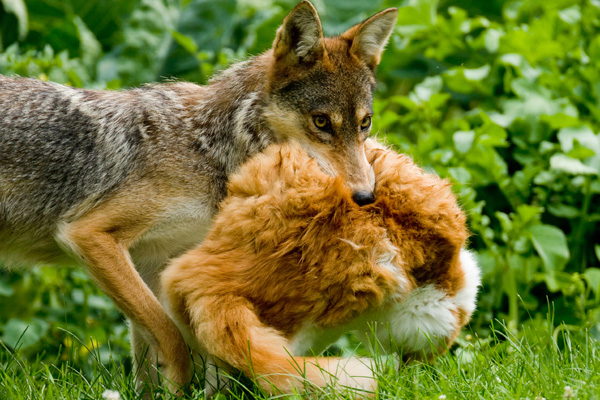 story by Bernard BrownYou won’t hear urban coyotes howling. They’re nocturnal and as quiet as, well, cats. But coyotes are filling the vacancy we created at the top of the food chain when we wiped out grey wolves and cougars in eastern North America. By now, hundreds of the wily canids thrive in Chicago and breed in Washington, D.C.; in 2006, a coyote was trapped in Manhattan’s Central Park. You might picture canyons and road runners when you think of coyotes, but according to the Pennsylvania State Game Commission, they have been spreading across the commonwealth. Gary Stolz, manager of the John Heinz National Wildlife Refuge, has even spotted them next door at the airport.
story by Bernard BrownYou won’t hear urban coyotes howling. They’re nocturnal and as quiet as, well, cats. But coyotes are filling the vacancy we created at the top of the food chain when we wiped out grey wolves and cougars in eastern North America. By now, hundreds of the wily canids thrive in Chicago and breed in Washington, D.C.; in 2006, a coyote was trapped in Manhattan’s Central Park. You might picture canyons and road runners when you think of coyotes, but according to the Pennsylvania State Game Commission, they have been spreading across the commonwealth. Gary Stolz, manager of the John Heinz National Wildlife Refuge, has even spotted them next door at the airport.
So, what do coyotes have to do with birds and cats? Coyotes are unsentimental about cats; they simply eat them. Cat owners know this, and will tend to keep their pets indoors when coyotes are in town. But for birds, these house cats aren’t prey, or even cute pets—they’re savage “subsidized” predators. The good news is that a thriving coyote population means a smaller cat population and, consequently, more songbirds.
It’s all about “mesopredator release.” Predators tend to kill or drive off smaller predators. Remove the top predators and the mid-level—or “meso”—predators are “released” and become more abundant. More mesopredators can mean less of what they eat, such as songbirds. This might seem pretty straightforward with native mesopredators like foxes, but it gets a little more complicated with cats.
Wild predator populations are inextricably bound to prey populations—no lemmings, no snow owls. Cats, however, are fed (subsidized) by humans—even feral cats find food left out for them. Thus cats can hunt prey species at levels too low to support wild predators, but still not starve. What’s worse, even a well-fed cat will kill for kicks. This is a nightmare for songbirds, and cats have been found to be major contributors to the decline and extinction of birds worldwide.
Don’t think your cat is a killer? Studies have found bird remains in the scat of cats whose owners reported that their cats don’t bring birds home. And bells don’t work; birds don’t associate ringing with danger. While Trap-Neuter-Release programs are popular, and have some anecdotal evidence in their favor, more rigorous studies have found them to be ineffective at reducing feral cat populations, which can be more difficult to eliminate.
At Benjamin Rush State Park, just off Roosevelt Boulevard in Philadelphia, a cat lover orchestrated an effort to rehome almost all its nearly 50 homeless cats while vigilantly picking up newly dumped kittens, explains Donna Remick of the Friends of Poquessing Watershed (on the Philadelphia-Bucks County border). In cat removal operations, some feral cats might not find homes and end up euthanized, but the choice to spare them dooms many more wild critters. So, with no “no-kill” option, waiting for the coyotes’ arrival isn’t so bad.
BERNARD BROWN is an amateur field herper, bureaucrat and founder of the PB&J Campaign (pbjcampaign.org), a movement focused on the benefits of eating lower on the food chain. Read about his forays into the natural world at phillyherping.blogspot.com.



Well said, house cats do a tremendous amount of damage to wildlife.
Well said, house cats do a tremendous amount of damage to wildlife.